Varieties and selection of corner hinges
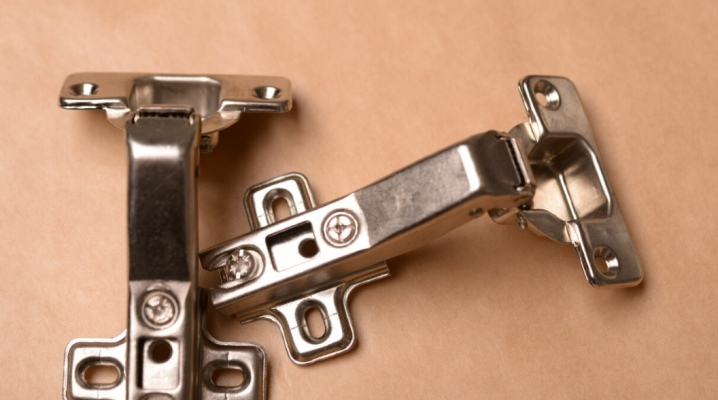
The basic elements of furniture fittings for any purpose are door hinges; they can have a variety of different designs. The most demanded on the market are four-joint products - practical and reliable, with a long service life. They, in turn, are divided into two types: straight lines with an angle of 90 ° and additional angular ones, which involve all other non-standard angles. Such fittings are widely used when assembling corner furniture modules.
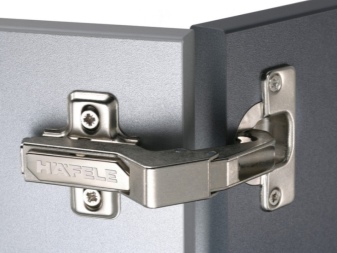
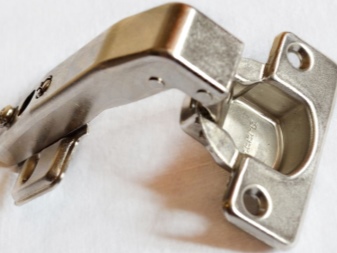
Views
Corner hinges are used to accommodate the sashes of suspended furniture structures - most often they are corner cabinets of wardrobes and kitchen sets. Such hinges can differ in opening angles, while the angle has not only a numerical value, but also a certain shape (sharp and obtuse).
Corner hinges are provided with adjusting bolts to align the sash from either side, as well as to the corner of the porch. They have a built-in door closer, which makes the door opening as smooth as possible. This design significantly increases the operating period due to the fact that the mechanism wears out much more slowly than with a sharp slamming of the sash.
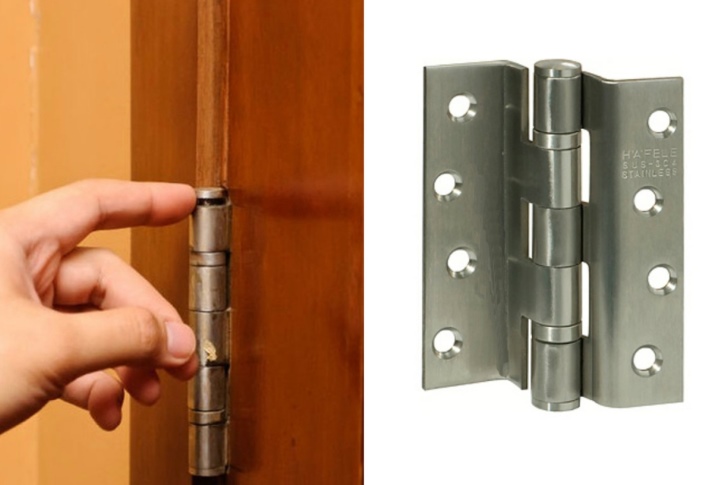
Corner loops are:
- internal - such accessories are fixed inside the wardrobe;
- overhead - they are placed on the facade and cover the side of the case in the open state.
Fittings with a door closer are classified depending on the type of facade, as well as the angle of installation relative to the body. Visually, they differ from typical ones exclusively in the configuration of the shoulder, inside which special shock-absorbing mechanisms are mounted. Depending on the type of product, the closer can be built-in or overhead. For example, such hinges are offered on the market by Blum.
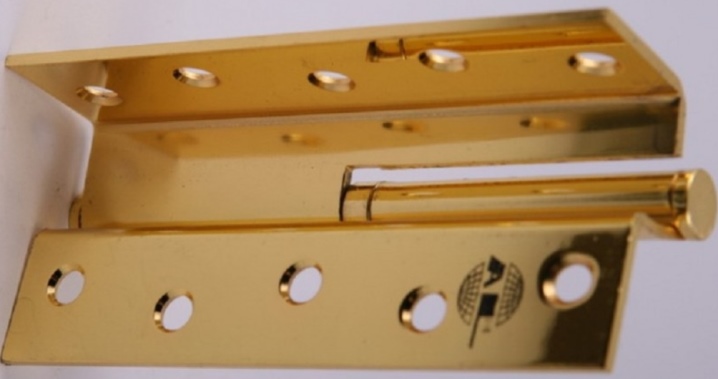
However, in the overwhelming majority of cases, the models sold in stores do not provide for the possibility of their further improvement. Therefore, if you plan to install facades with soft closing without knocking, then it is better to immediately purchase hinge mechanisms with door closers. Of course, they will cost a little more, but they will also last longer.
A separate category of corner hinges are models created specifically for use in glass facades - they can be drilled or without glass drilling.
In general, all produced mechanisms may differ from each other according to the following criteria:
- size;
- metal of manufacture;
- base material where the hinges are attached;
- detachable structure;
- fixation methods;
- durability.
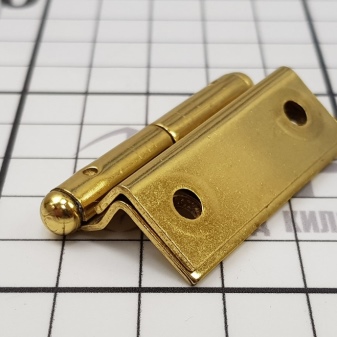
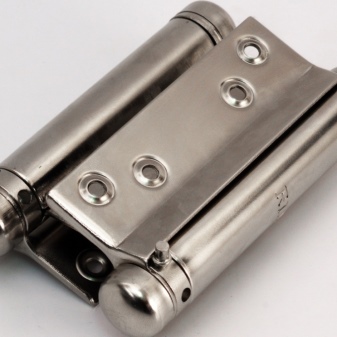
Opening angles
Corner fittings are installed on corner furniture. In this case, the sashes are attached to the base of the door frame at a predetermined angle. Such hinges allow flaps to swing open at 30, 45, 90, 135, and 175 degrees. The most widespread are the following options.
- 30 ° corner hinge. It is fixed to the facade located 90 + 30 degrees relative to the body. Mostly in demand in wardrobe end cabinets or in kitchen sets. The installation angle is 120 °, so some manufacturers mark such products for installation - they go on sale under the name "120 degree hinge". Popularly, these models are better known as the "grasshopper".
- 45 ° corner hinge. Used in single and double wardrobes. Typically, this type of furniture is found in dressing rooms and kitchens.Fastened at 135 ° and is therefore labeled as “135 ° hinge” by some manufacturers.
- Corner hinge at 120-130 °. It is used for the adhesion of a pair of facades connected to each other at an angle of 270 °. Hinges of this type open with an accordion.
- Less commonly, at points of sale, loops with a negative angle can be seen. They are not widely used on the market, they are used mainly on the extreme sash of the end cabinet, which is easier to open from the opposite edge. There are situations when just such a loop becomes the only available option.

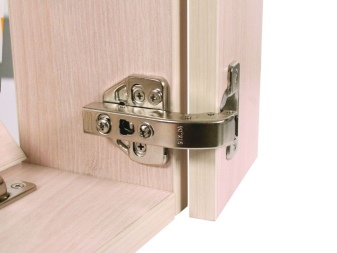
The listed types of corner hinges belong to the category of standard and most common. If necessary, you can set any other opening angle, for example, 60, 15 or 25 degrees. In this case, you will have to contact the craftsmen who make these to order. They will make fittings taking into account the customer's data: size, desired opening angle and material. The disadvantages of such a solution are the relatively high cost and time required to manufacture the optimal model.
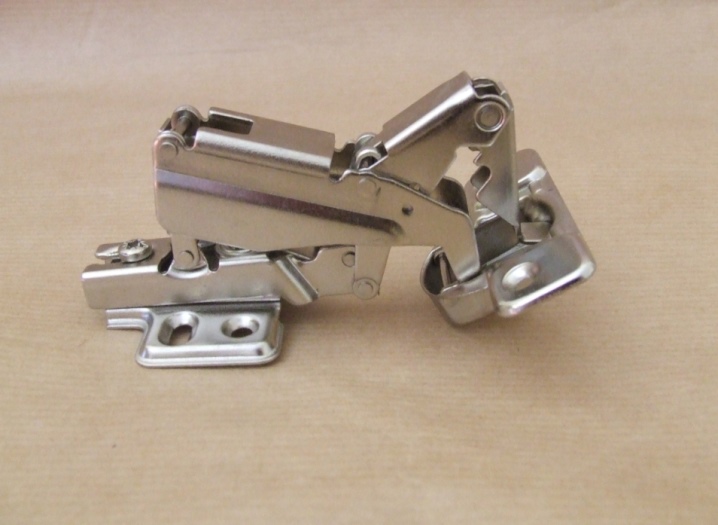
How to choose?
When purchasing corner hinges, the basic selection criterion is the angle of the cabinet relative to the rest of the furniture, as well as the free space available for opening it. Most often, furniture doors are opened with a closer at an angle of 90 to 110 degrees. In this case, straight loops are used. Corners are needed when you want to go beyond the specified range.
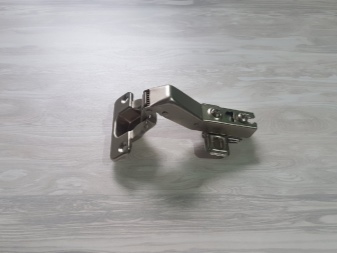
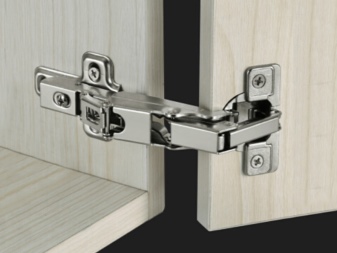
If the swing angle of the sash is greater, you should choose a product marked "plus", if the angle is lower, then, respectively, "minus". In a situation where the value of the non-standard angle is not a multiple of five, it is necessary to additionally mount a special nozzle, which will allow you to adjust the optimal opening angle.
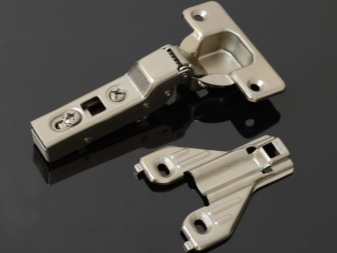

The following video talks about hinges for assembling furniture.













The comment was sent successfully.